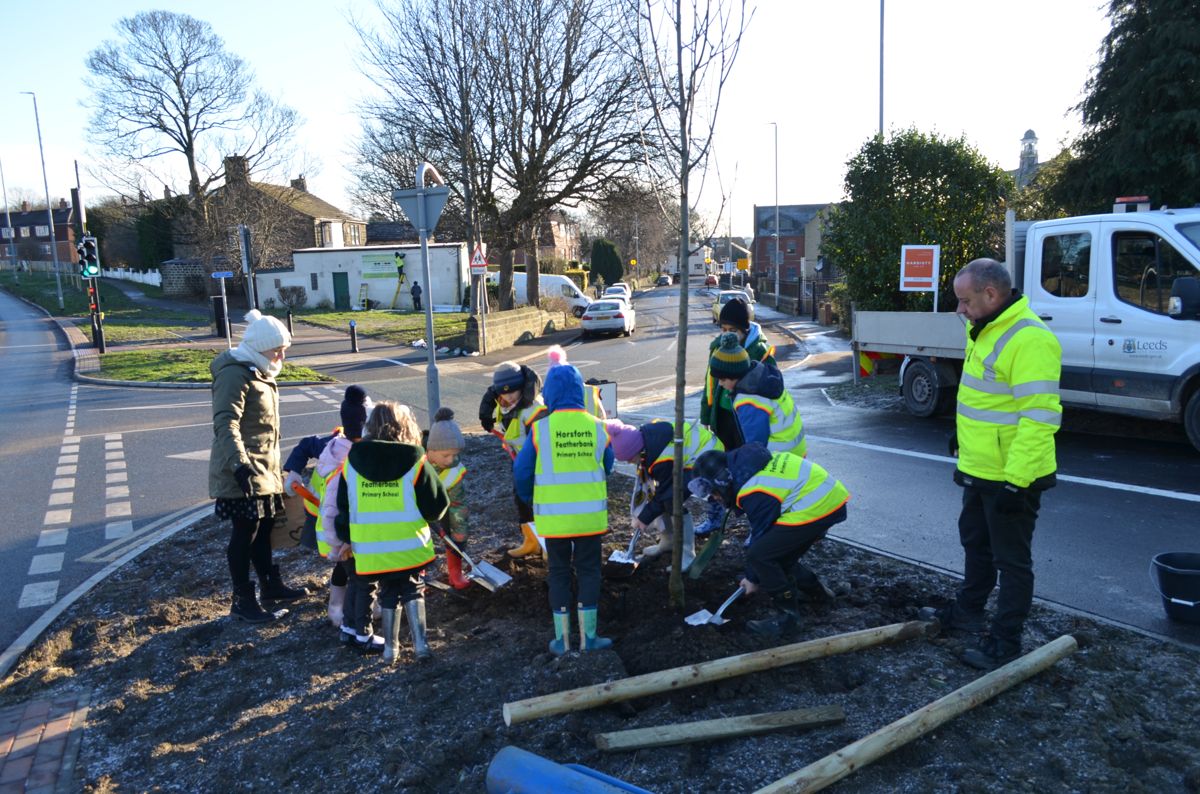The A6120 Fink Hill highway scheme in West Yorkshire has been transformed with new pedestrian crossings, road widening, cycle lanes, and tree planting near Featherbank Primary School, funded by the Levelling Up Fund. Leeds City Council and local school pupils worked together to create a safer and more sustainable environment, aligning with broader regional goals of road safety and eco-friendliness set by Mayor Tracy Brabin.
What improvements have been made in the Fink Hill Highways Scheme?
- Pedestrian crossings added at the Fink Hill junction.
- Road widening between Horsforth roundabout and Fink Hill.
- New cycle lanes on the Outer Ring Road.
- Planting of 165 new trees by local school pupils.
- Government investment from the Levelling Up Fund and West Yorkshire Transport Fund.
Enhancing Road Safety and Connectivity
The A6120 Fink Hill highway scheme stands as a testament to the collective effort aimed at safeguarding pedestrians and easing traffic flow in the bustling heart of West Yorkshire. The junction between the A65 New Roadside and the Low Lane roundabout is a vital artery for commuters and residents alike. A series of significant improvements have been rolled out over the course of a year by Leeds City Council, reflecting a deep commitment to infrastructural excellence.
The enhancements include the introduction of pedestrian crossing facilities on all branches of the Fink Hill junction, ensuring safe passage for every pedestrian. Road widening efforts between Horsforth roundabout and Fink Hill have been executed to perfection, presenting two lanes in both directions, alongside a designated left-turn lane that eases the flow of vehicles converging onto the junction. The scheme doesn’t stop there; from Fink Hill to Charles Street, the road has been expanded to accommodate two lanes for each direction, with an additional right turn lane for those transitioning from the A6120 into Fink Hill.
The scheme’s impact extends beyond the tarmac, with the local primary school reaping the benefits of these substantial transformations. A new pedestrian crossing east of Featherbank Lane has been strategically placed to ensure the safety of school pupils who traverse the A6120 daily. The broader vision encompassed the creation of new cycle lanes on both the northern and southern sides of the Outer Ring Road, weaving through Horsforth Hall Park, and punctuated by conveniently located crossing points and clear signposts for cyclists.
Community and Environmental Enhancement
Community engagement played a pivotal role in the revitalization of the area, with pupils from Featherbank Primary School diving into an enriching experience of tree planting. These young environmental stewards were tasked with planting an array of trees near their school, symbolizing the dawn of a greener, more sustainable future. The initiative to plant up to 165 new trees, replacing older ones at a rate of three to one, introduces a diverse botanical spectrum set to breathe fresh life into the locale.
Miss Scudder, the head teacher from Horsforth Featherbank Primary School, expressed immense pride in her students’ involvement, emphasizing the profound impact of the new, secure crossing facilities on the families’ safety. This sentiment was echoed by Councillor Helen Hayden, the Leeds City Council’s executive member for infrastructure and sustainable development, who highlighted the swift and tangible benefits derived from the scheme. Her visit to the area underscored the dual triumphs of improved connectivity and enhanced safety for both pedestrians and cyclists.
Mayor Tracy Brabin of West Yorkshire commended the scheme, pointing to its alignment with broader regional goals of road safety and sustainability. She identified these developments as critical steps toward the ambitious targets of zero road deaths and serious injuries by 2040 and achieving a carbon net-zero status for the region by 2038. The drive to make alternative modes of transportation more accessible is a cornerstone of building a safer and eco-friendlier West Yorkshire.
Government Support and Vision
The Central Government has shown a strong commitment to the improvement of infrastructure within the region. Roads Minister Guy Opperman expressed satisfaction with the allocation of funds from the Government’s £20 million Levelling Up package for Leeds City Council, praising the scheme’s contribution to smoother and safer travel. This support underscores a broader governmental strategy, aimed at enhancing the quality of roads and creating a more cohesive transportation network across the UK.
Jointly funded by the Department for Transport (Levelling Up Fund) and the West Yorkshire Combined Authority (West Yorkshire Transport Fund) as part of the Corridor Improvement Programme (CIP), the Fink Hill highway scheme is an embodiment of strategic collaboration across multiple levels of government. This project, nestled within the Connecting West Leeds (CWL) programme, has set a benchmark for future initiatives that prioritize safety and environmental stewardship alongside infrastructural development.
The Fink Hill highways scheme has redefined the landscape of the region, fostering a harmonious balance between the imperatives of road safety, environmental consciousness, and community involvement. The integrated approach, encompassing infrastructural improvements, educational engagement, and governmental synergy, has created a blueprint for future projects that wish to marry functionality with foresight. As the trees planted by the young minds of Featherbank Primary School take root, so does the legacy of a safer, greener, and more connected West Yorkshire.
- Pedestrian crossings have been added at the Fink Hill junction.
- Road widening has been completed between Horsforth roundabout and Fink Hill.
- New cycle lanes have been implemented on the Outer Ring Road.
- 165 new trees have been planted by local school pupils.
- The improvements were funded by the Levelling Up Fund and West Yorkshire Transport Fund.
